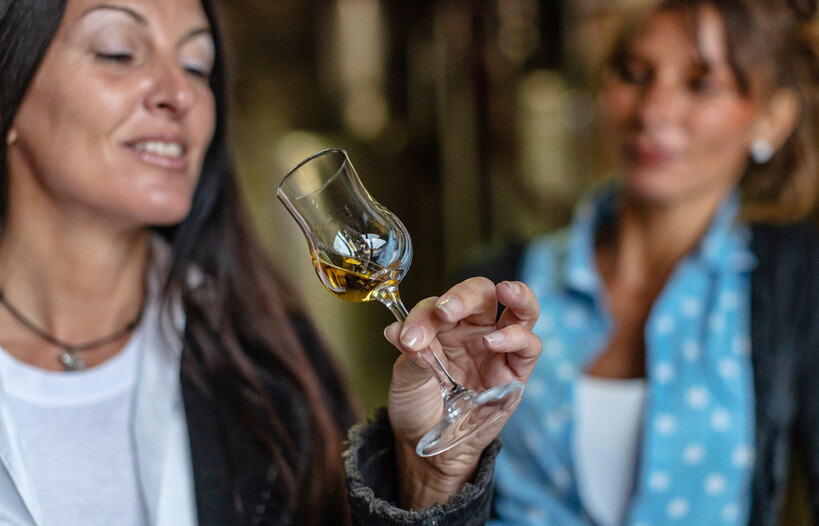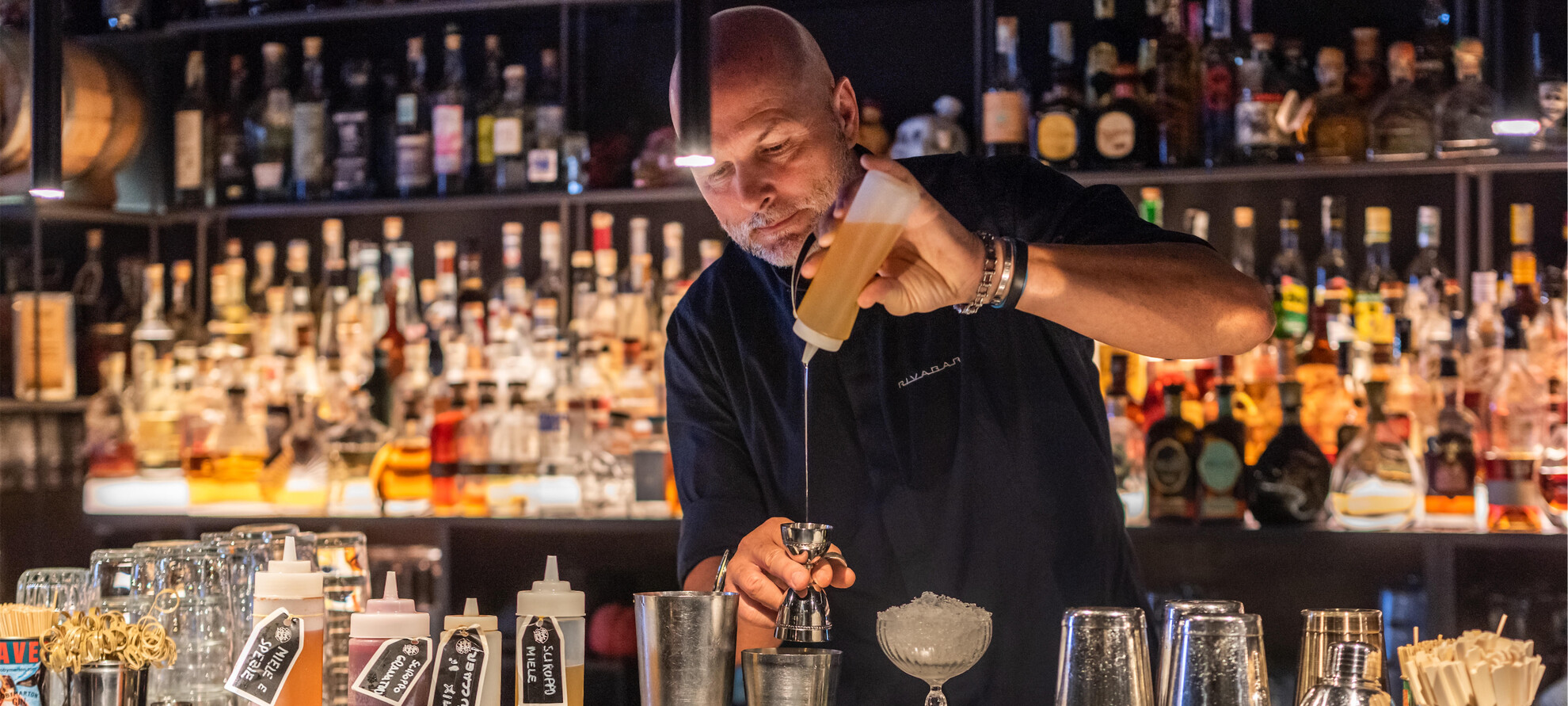Leonardo Veronesi
The bartender of Trentino grappa
Caipirinha? No, thank you! A Negroni with grappa!
Or, better yet, a Ve.n.to, the cocktail with young Trentino grappa. Ve.n.to is the first grappa-based drink to have been added to the IBA, International Bartenders Association, cocktail list in 2019. The recipe was created jointly by Leonardo Veronesi, the magician of Riva del Garda mixing, even if he would prefer to be considered an explorer, and his brotherly friend Samuele Ambrosi, also an award-winning bartender. A revolution!
Grappa has changed its skin. From a product with a “curative” function, since the 2000s, with the arrival of aged grappas, it has been slowly turned into a noble distillate for meditation, like whiskey, rum and cognac, so to speak, and, in the hands of mixing masters, into a special ingredient for mixology magic. It is not the easiest spirit to dilute, and has little replicable potential. We will understand why.

The future of Trentino grappa
Trentino produces 10% of national grappa. Trentino grappa is unique in Italy in terms of pomace processing and the distillation method. And it is precisely in Trentino that Leonardo Veronesi, after years and years of incessant study and experimentation, together with Alessandro Marzadro, the current President of Istituto Tutela Grappa del Trentino, has been building the future of distillation, bringing the most iconic product of our valleys, by history and tradition, closer to an increasingly wider and new audience of admirers and ambassadors.
As good visionaries and precursors, together, Alessandro and Leonardo began talking about mixing a long time ago. “Leonardo”, Alessandro recalls, “proposed mixing grappa twenty years ago because he was convinced of its potential, having deep knowledge of and studied the distillate. He is one of those people who only do something if they believe in it. If he doesn’t like it he’ll tell you, he’s very direct.” Moreover, already in 2013, Leonardo had created his gin, Luz Gin, 10 years before the global gin-mania exploded.
Leonardo does not chase fads, he anticipates them. He travels the world to study trends, products and blends, understand what people drink based on their evolution and then translate them into drinks accessible to his patrons, in his bar, which offers at least 800 different labels of spirits: “I try to make sure that my clients do not tell me that they have been somewhere and saw a given drink, I have to be the one who propose new drinks to my customers.”
“Mixing is the possibility of creating a new product from the combination of ingredients that, when blended, fall in love and shed light,” says Leonardo. Not just any ingredients, the best examples of their kind, researched, selected, tested and re-tested in their elective affinities. For him, after more than 100 world bartender competitions, mixology is a constant aptitude. “I have a certain professional bias. I go to eat somewhere, they bring me two glasses of wine, I mix them. I go to someone’s house, they have a grappa, an amaro, an amaretto, while I chat I mix things up. You have to study, taste, understand.”
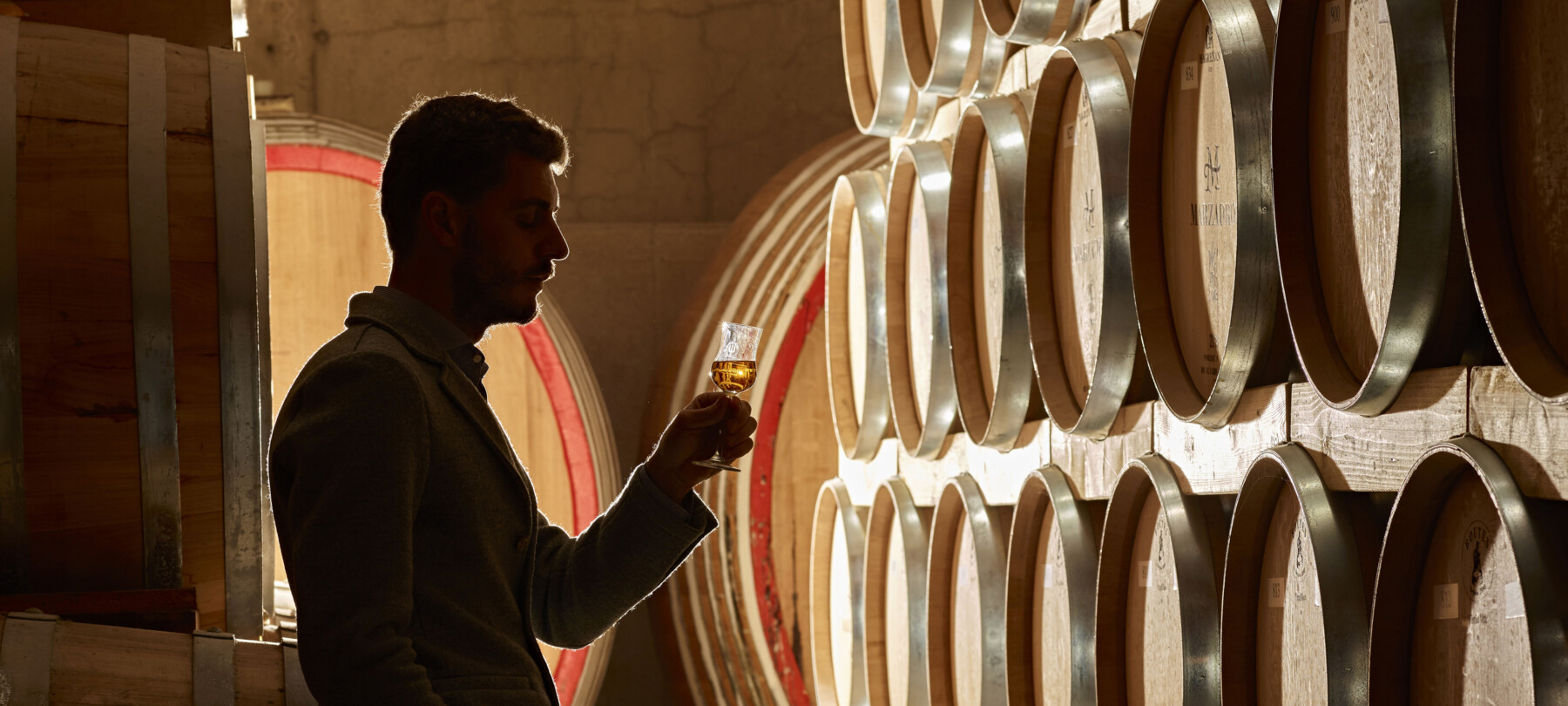
The past of Trentino grappa
“My grandfather sold grappa on doctor’s prescription in 1952. Those who had the flu drank hot water with grappa and sugar”, recalls Alessandro. It is the cultural legacy of a past in which grappa was thought to be digestive and suitable for countervailing the cold of our mountains. Today we know that this is not exactly the case. Alcohol requires digestion and, if taken in a certain quantity, even leads to hypothermia.
Moreover, today’s grappa is not the same as 25 years ago and, fortunately, “it is not a product that is abused; on average, it is consumed straight once a month and its true potential today is mixing, straight consumption comes after”, says Alessandro.
A challenge, especially for Trentino, which boasts the highest concentration of small distilleries within a few kilometres, and where every inhabitant has had some contact with a distillery, either by professional experience or by geographical proximity. The reason dates back to the last century when the Austrian government, in exchange for a daily tax and based on the family unit, allowed everyone at home to produce their own grappa for self-consumption. To date, Istituto Tutela Grappa del Trentino includes 24 distilleries under the Trident label, but if we want to go back in time, in the lower Vallagarina alone, a few decades ago there were as many as 30.
Grappa was produced because it was good. Our territory, with its very high temperature fluctuations, manages to give the distillate a different bouquet of aromas, unlike anywhere else. That is why the pomace has always been processed with great care. Pomace was and is precious, and must be treated well.
Over the years, Istituto Tutela Grappa del Trentino focused its studies to further refine the conservation techniques of the solid raw ingredient, because it is its conservation, together with native distillation techniques, that prevent the pomace from coming into direct contact with fire and, in turn, that gives quality and aromas to grappa. The main rule is to distill before Christmas, not because of a quirk, but to avoid the growth of mold on or other alterations to the pomace before it arrives in the still.
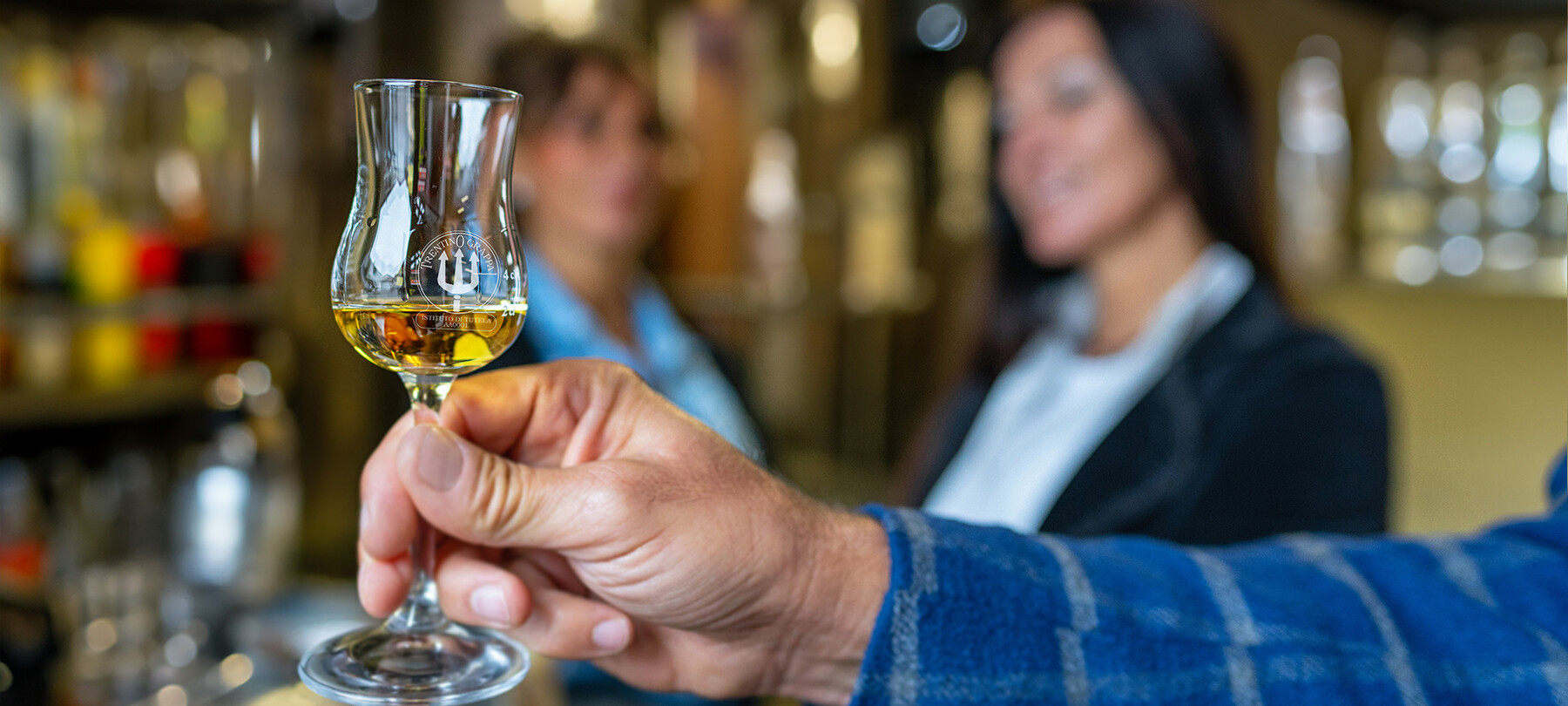
Leonardo and Trentino mixing
“I started this job 33 years ago. I worked in Spain, Germany, Holland and England. My first love was whiskey. Then I became passionate about more national products, and grappa became the challenge of a lifetime because it has characteristics that no other distillate has. Each bottle is different from the other in terms of notes, scents and aromas. The difference from pomace to pomace is abysmal. Each dilution is capable of enhancing defects or strengths, therefore each drink cannot be replicated with the same grappa. You have to find the right one or the right blend that works. The blends are fantastic. With top-of-the-range grappas you can create space-age products.”
It seemed to many that grappa had no future in mixing. And, instead, it’s just that it requires high technical skills and a lot, a lot of study. You have to know grappa.
As you talk to him, you get the impression that no time has passed. Passion, curiosity and an avalanche of ideas continue to inspire him. “You never stop learning in this profession, you can go on for a thousand years, but you will never know everything that exists in the world”.
His passion for quality translated into more than just the search for the best spirit; indeed, it has consistently been the search for each of the raw ingredients necessary to create drinks, because “what matters when you prepare a drink for your customers is to let them enjoy an experience, to make them happy, and to prepare something that comes close to their taste.” This is a mantra for Leonardo. “The customer isn’t the one who walks in the door, he’s the one who comes back”. So his idea of a cocktail is a drink created with local products, where each ingredient added to the distillate comes from Trentino or, when it is not possible, other Italian ingredients will do.
Among the upcoming challenges is the development of a Trentino Grappapedia and educational projects which he is also implementing with the help of a new generation of bartenders. It takes culture and knowledge, the bar must achieve the same value and the same possibilities as catering, it needs capable and competent figures who continue to study, and products that do not fool customers by simply mixing products.
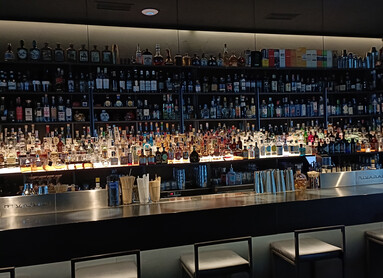
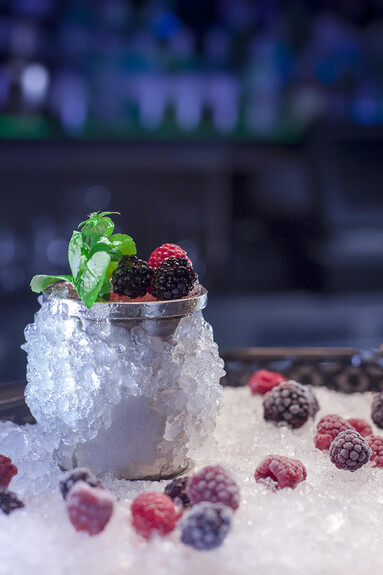
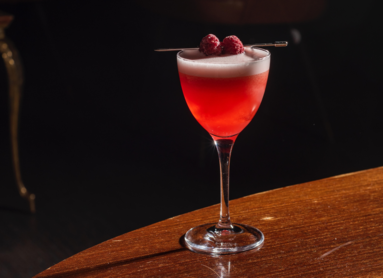
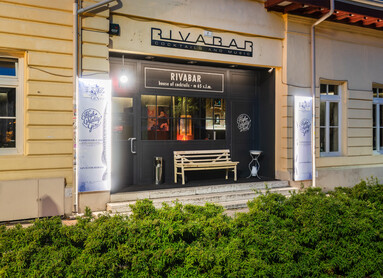


Trentino emotion
After all, as Alessandro reminds us, “bartenders will be the new ambassadors of our spirits”. The world of distillation is a true magic of technique and emotion. The enjoyment of grappa itself is an experience that cannot be guided, except in the phase of understanding the production techniques, because it is a subjective and meditative experience. Unlike a wine that a good sommelier can make you appreciate, the notes that grappa releases are too many and different. The taste experience begins when the glass is ready, and that is a journey for everyone to take for themselves. Even when diluted.
And that famous Negroni, which smells of Sicilian oranges, releases a velvet of grappa aromas that are impossible to name because they don’t resemble anything we had previously known. Seeing is believing.
Happy meditation everyone!
